Subscribe
Sign up and be the first to
receive exclusive stats, news, and updates from Opta Analyst.

Sign up and be the first to
receive exclusive stats, news, and updates from Opta Analyst.
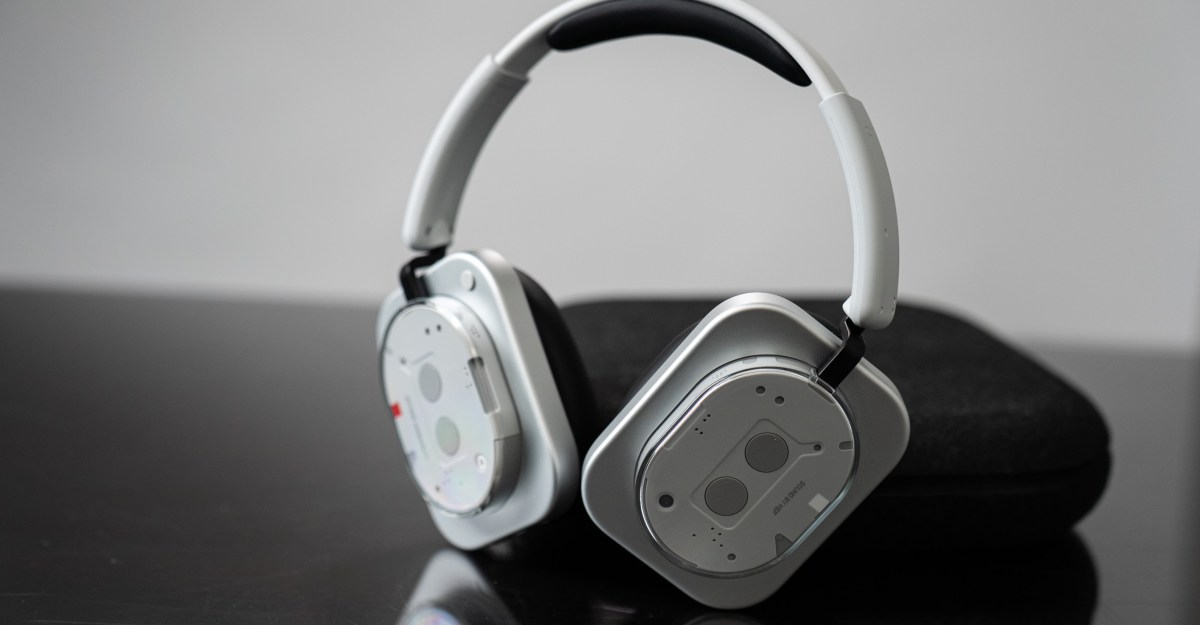
Nothing has launched its first pair of over-ear headphones, imaginatively named the Headphone 1. At $299, these are priced to compete with flagship fare, distinguished primarily by their distinctive Nothing design language — right down to the buttons.
While the boxy outline calls to mind Apple’s AirPods Max, the semi-transparent detailing on the outside of each ear cup is all Nothing. So are the buttons, all differently shaped, with some you press, some you flick, and some you toggle. They’re meant to be more intuitive to use by touch alone, so you don’t have to take the headphones off to remind yourself which button turns on pairing.
With active noise canceling, spatial audio, and support for lossless playback, these tick off most of the usual high-end headphone features. There’s 35 hours of battery life with noise cancellation on and an IP52 rating for water resistance, and the audio itself was developed in partnership with HiFi brand KEF, with custom 40mm drivers.
My colleague Andru Marino has already reviewed the Headphone 1, so check out his review to find out how they stack up. Preorders launch on Friday, July 4th, with a full release on the 15th.
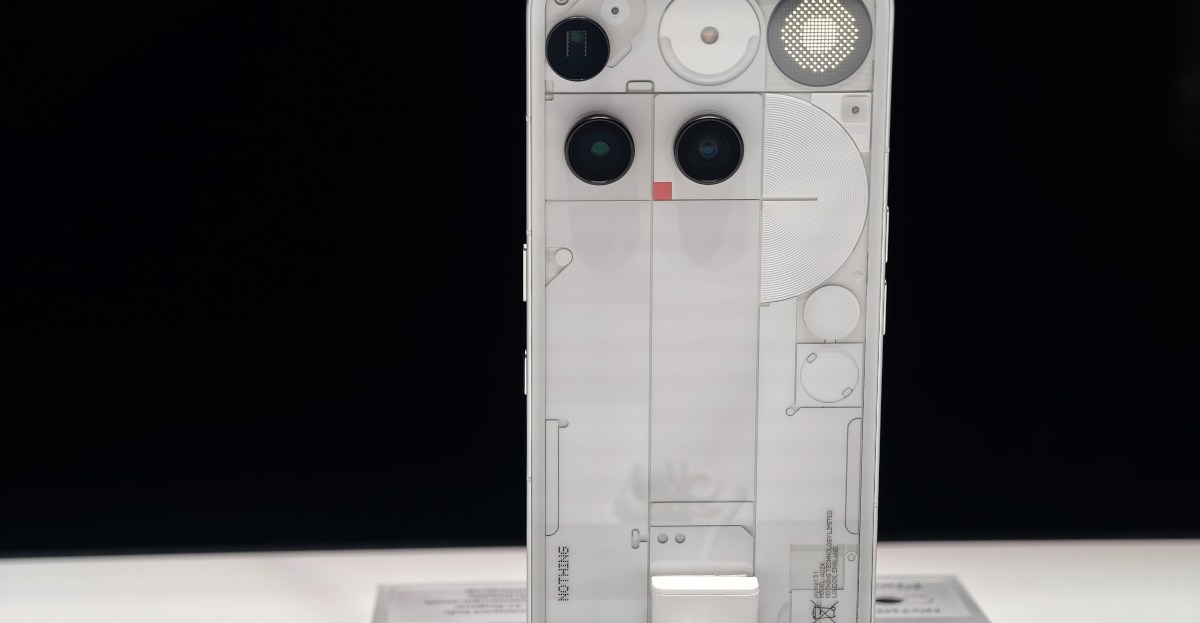
“The Glyph interface is not a gimmick,” Nothing founder and CEO Carl Pei told the press as he revealed the Nothing Phone 3 for the first time, shortly before announcing that its new iteration lets you play Spin the Bottle on the back of the phone.
It’s mixed messaging, but in Nothing’s defense, you couldn’t accuse them of making that mistake elsewhere. The Phone 3, we’re told, is Nothing’s “first true flagship phone,” a point the company is keen to hammer home: flagship chip, flagship camera, flagship price. In fact, it’s so flagship that the company is even springing for a true US launch, its first since 2023’s Phone 2, which Pei tells me only makes sense for their “premium” phones.
At $799, the Phone 3 is priced to match the iPhone 16, Galaxy S25, and Pixel 9, as Nothing positions itself firmly outside its mid-range origins, and Pei says the company feels ready “to compete with products in that price level.” Preorders open Friday, July 4th, with general sale starting from the 15th from Nothing’s own webstore and Amazon in the US. Nothing says the phone is fully compatible with T-Mobile and AT&T, with “more limited 5G support” on Verizon.
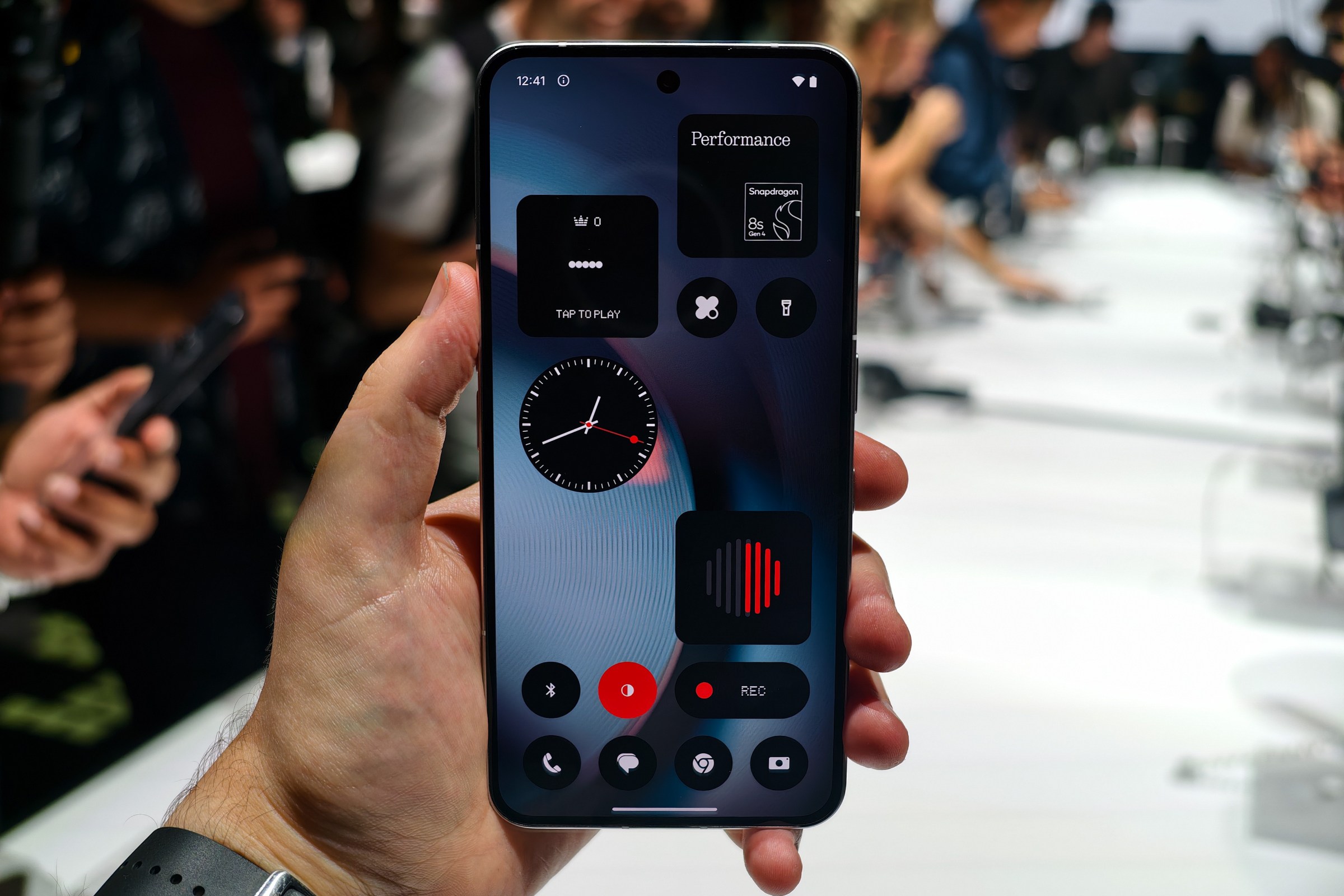
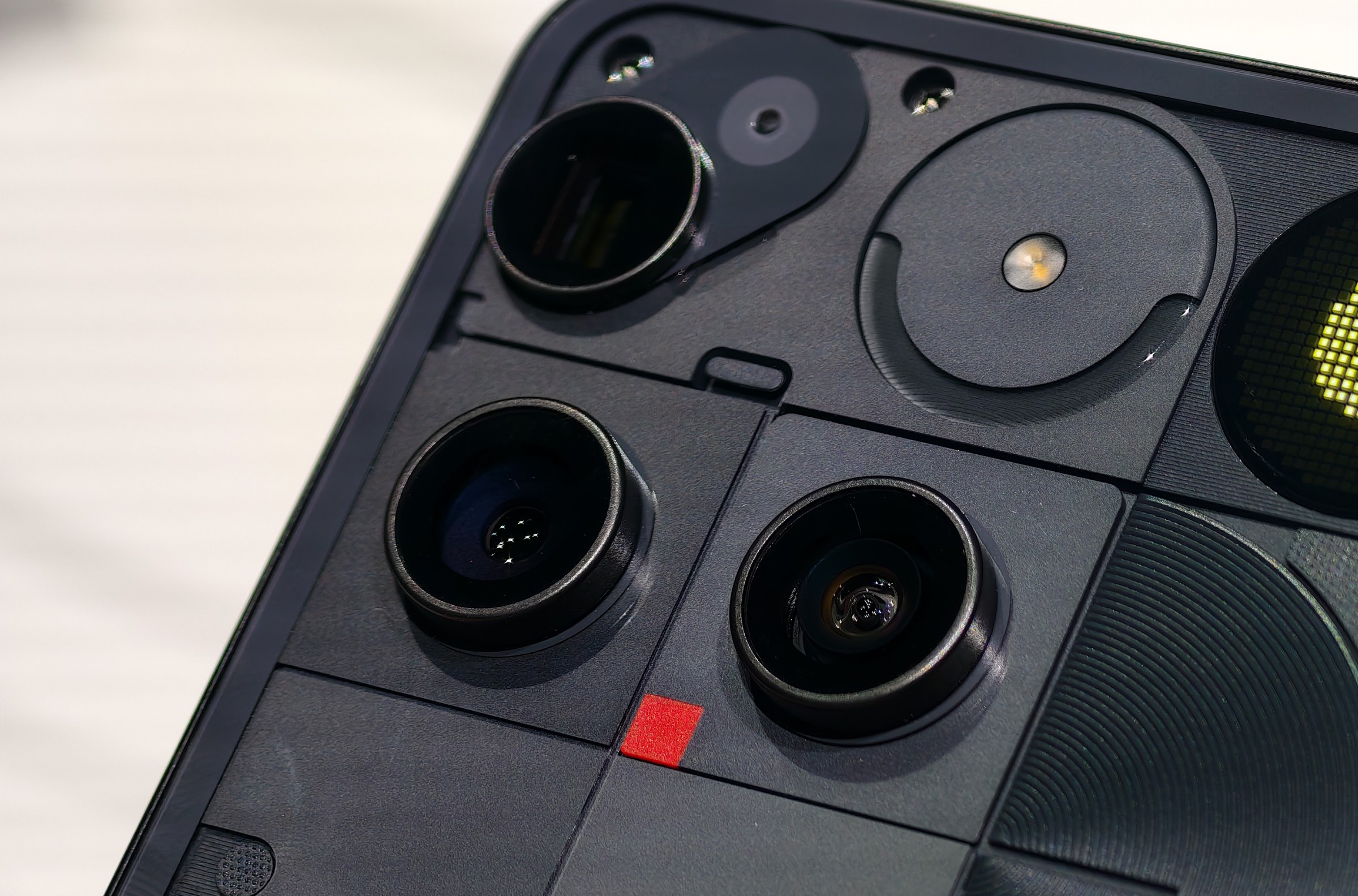
This is Nothing’s most expensive phone yet, but on paper the specs should keep pace with the price. The Snapdragon 8S Gen 4 chip isn’t the most powerful around right now, but its performance should cope with all but the most demanding mobile games, especially paired with up to 16GB of RAM. Storage starts at 256GB, and for an additional $100, you can get 512GB.
The Nothing Phone 3 uses a silicon-carbon battery, a relatively new technology that makes it easier to fit big batteries into small phones. Here, that means a generous 5,150mAh capacity, combined with a 65W wired charging speed and 15W wireless charging speed. The 6.67-inch OLED screen is more than twice as bright as the Phone 2’s, and the IP68 water- and dust-resistance rating is a first for Nothing too. All four of the cameras — three on the back, one on the front — are 50-megapixel, though it’ll be impossible to say whether they’re any good until we get to test the phone out properly. Nothing’s camera processing has lagged a little behind the competition in the past, so this’ll be the area to watch.
All that’s in line with other flagship phones, so what makes the Phone 3 feel like Nothing? That’s where that new, gimmick-free Glyph design comes in. While previous Nothing phones have featured an array of light strips that can glow and flash in custom patterns for notifications and ringtones, here, those have been swapped out for a small, circular dot matrix LED display in one corner of the back of the phone.
The Glyph Matrix is immediately less striking than the older phones’ designs, and less unique too — Asus has included dot matrix displays on the back of its ROG gaming phones for years. Pei told me that the advantage is that custom notifications can be “much more immediate,” with easily recognizable images or emoji tied to specific apps and contacts rather than abstract animations that might be hard to grok at a glance.
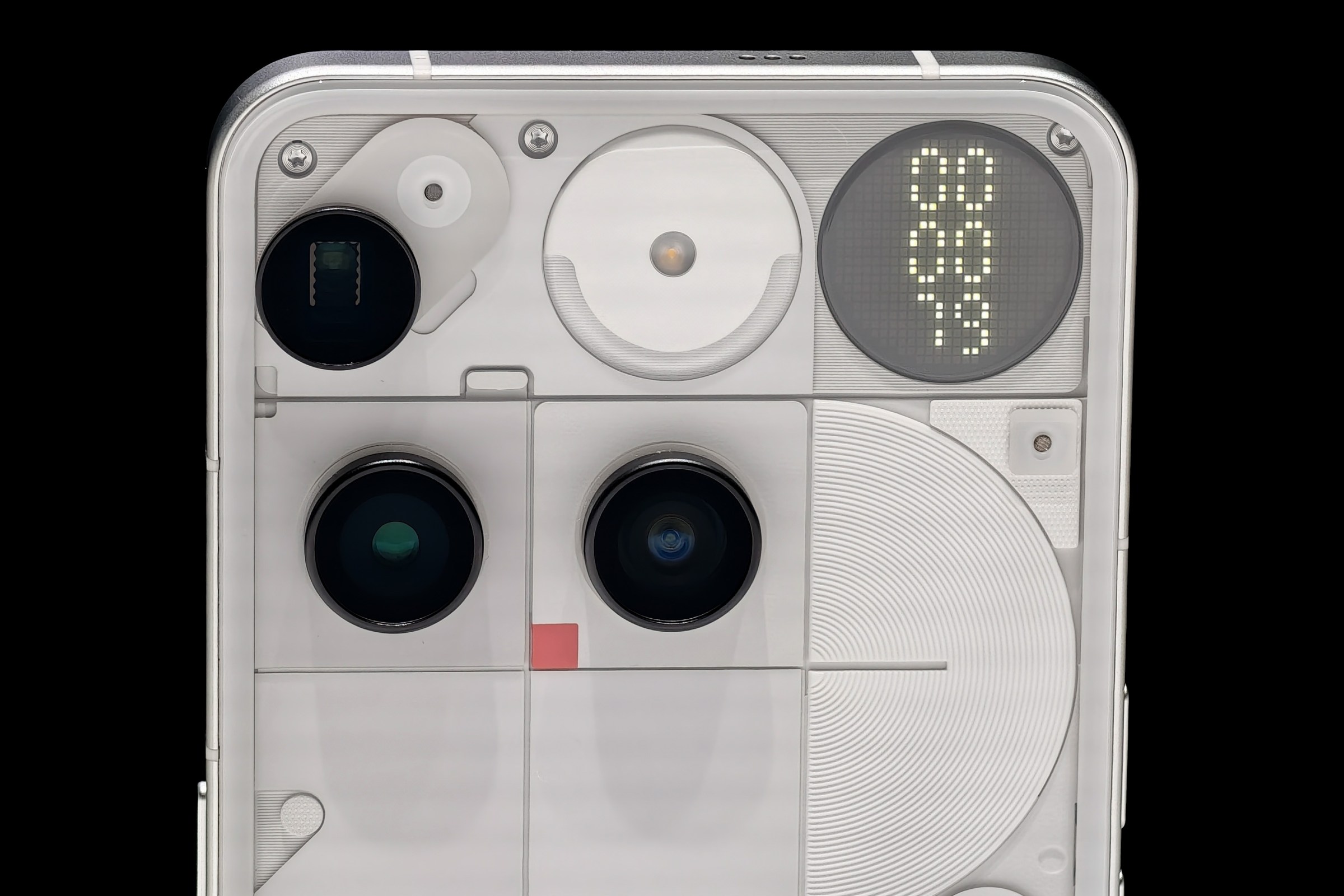
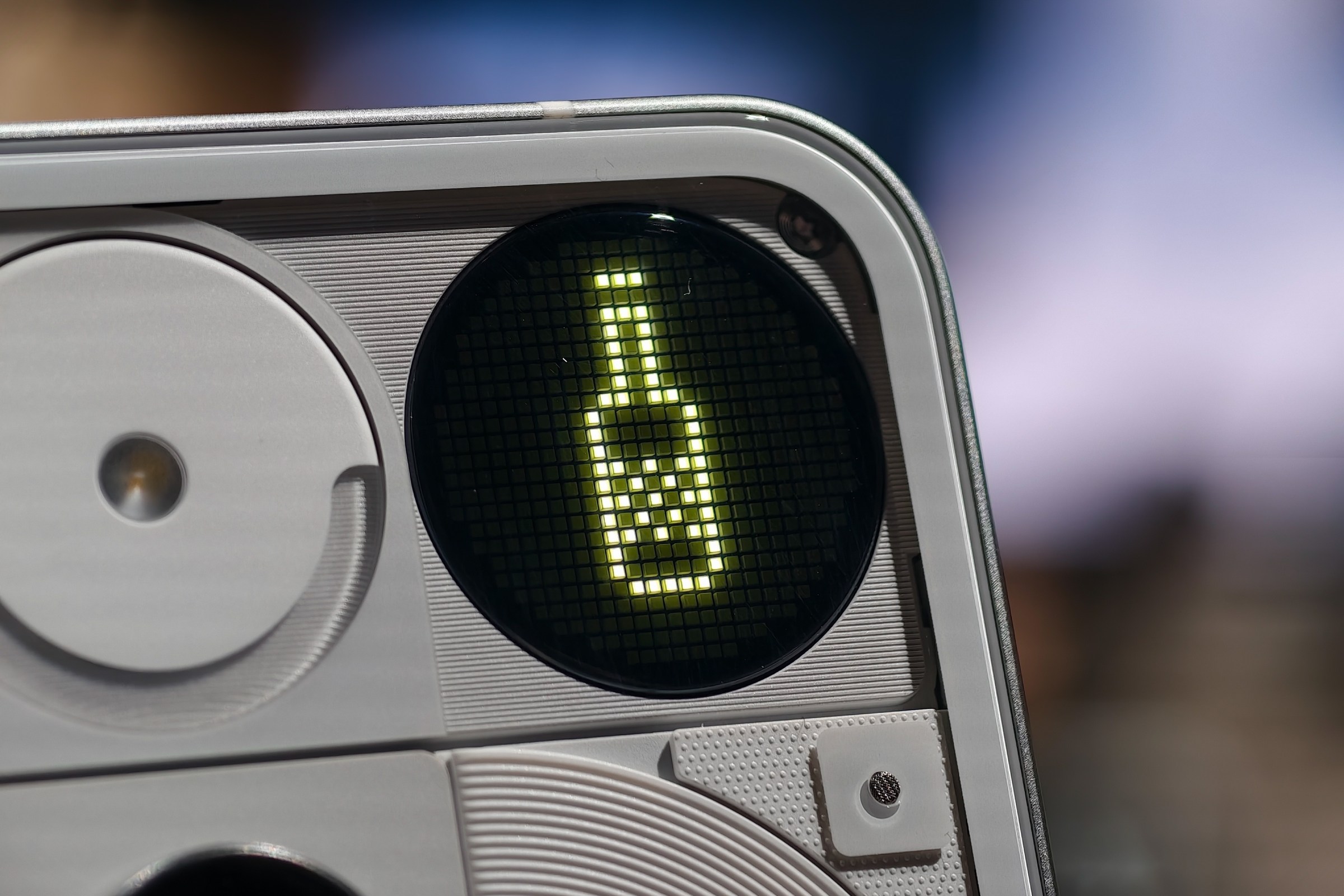
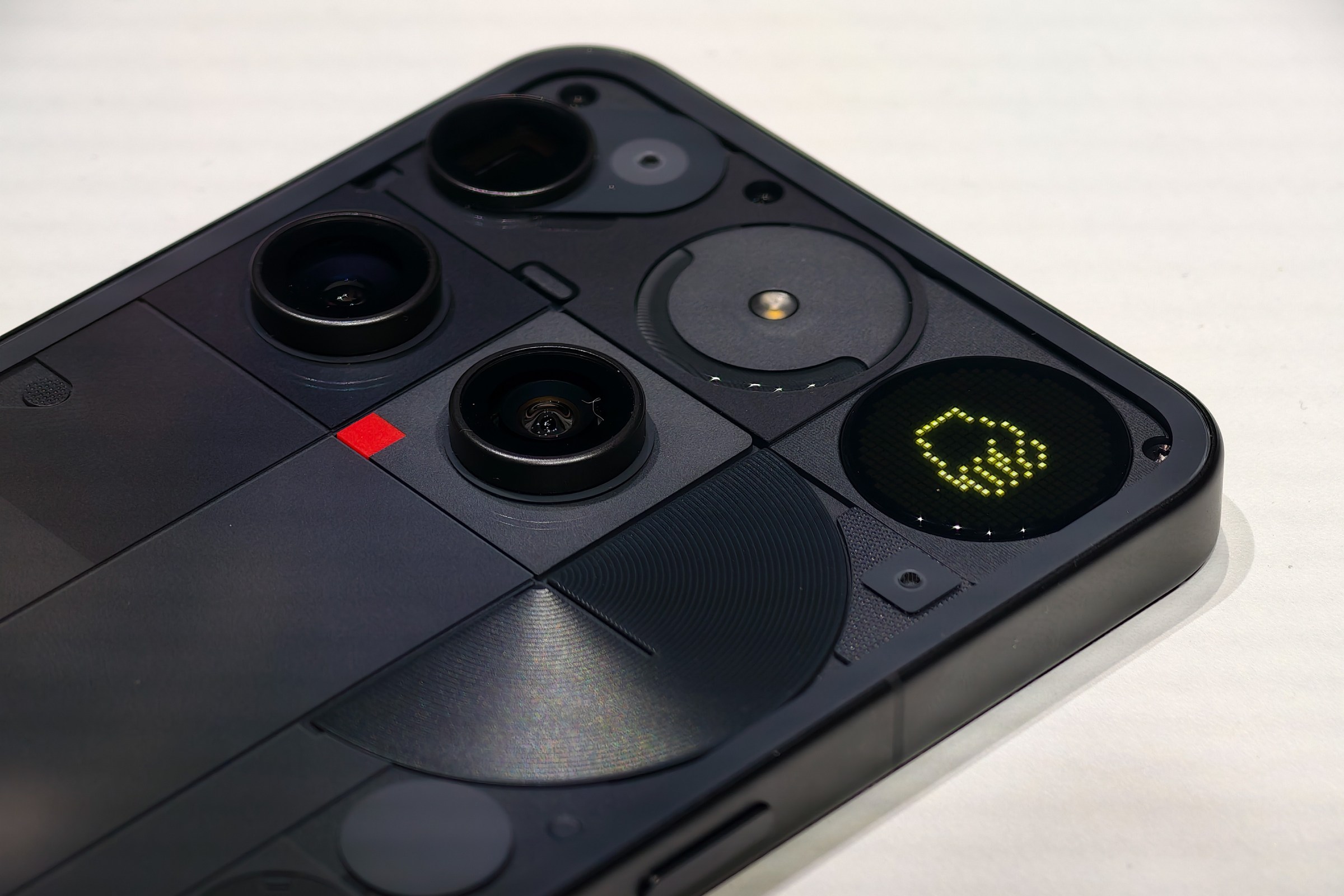
Then there are the Glyph-focused games, officially dubbed Glyph Toys, designed to add a touch of fun that’s “severely lacking in the space right now.” The Phone 3 launches with Spin the Bottle, Rock Paper Scissors, and more functional fare like a stopwatch and battery indicator, which you can cycle between using a haptic button hidden among the many shapes on the semi-transparent rear. Pei suggests you could use Spin the Bottle to help decide how to split the bill at dinner, one of those jokes that plays well during a keynote speech but doesn’t make much sense when you really think about it.
Pei insists that Nothing isn’t done iterating on the Glyph Matrix. He calls the “expandability” the most exciting part of the new design, citing Glyph Toys already developed based on ideas from the company’s “community” of fans, like a magic eight ball. “I think they might invent some novel use cases we haven’t even thought of yet,” Pei says.
The Phone 3 also sees the return of the Essential Key, a side button that debuted on the Phone 3A and 3A Pro earlier this year. It’s customizable, but by default launches Essential Space, an AI-powered app that stores and analyzes screenshots to give you reminders about events or travel plans. New to this phone is the option to transcribe and summarize meeting audio, along with a universal search bar that can track down everything from contacts to photos and answer basic factual queries.
The Phone 3 is a big swing for Nothing. It’s the company’s first move into the flagship market, and its first effort to crack the US in two years, so perhaps it’s no surprise that the phone’s new Glyph design is a little more conservative than we’re used to. Still, Nothing playing it safe has produced a bolder and more divisive phone than any Samsung or Apple has put out in years — just don’t call it a gimmick.
Photography by Dominic Preston / The Verge.
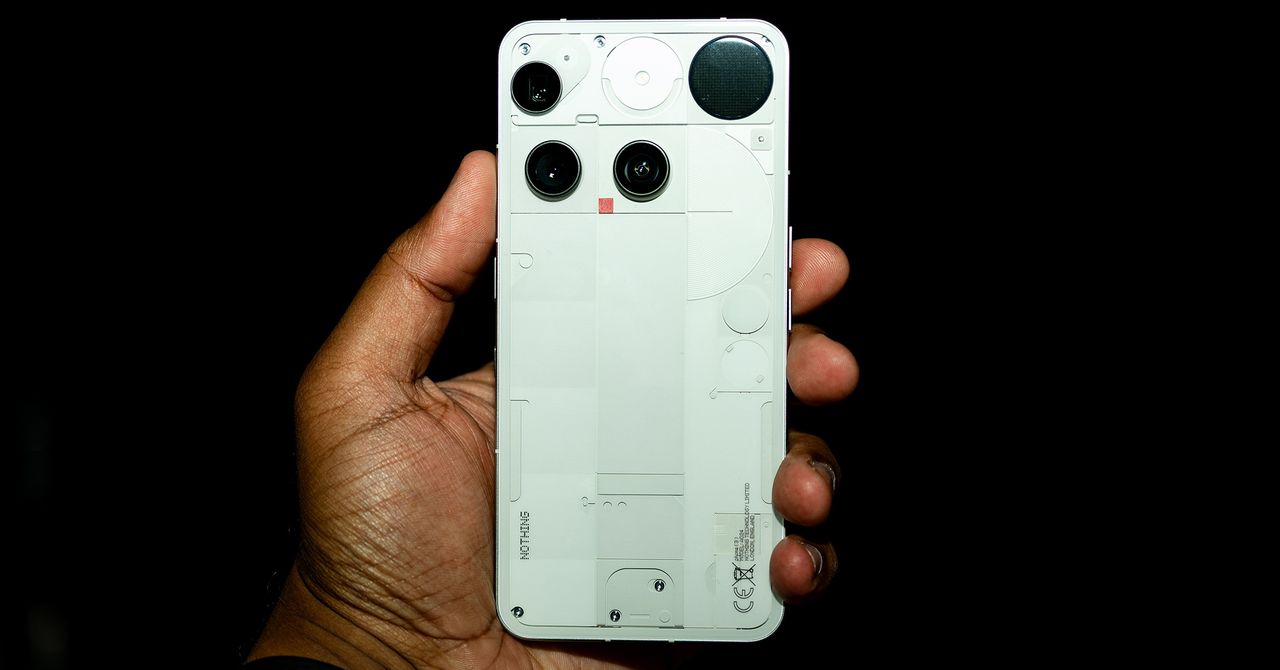
The phone has a grid design with three columns, representing the flexible printed circuit boards underneath. The triple-camera system is laid out along the top of these grids with the Glyph Matrix display—more on that in a second. It’s an unusual style that breaks from circular or rectangular camera modules in most phones.
The Glyph Matrix is an evolution of Nothing’s famous Glyph LEDs on prior phones. Originally designed to light up when notifications arrived, it also used the lights creatively to show how much time was left on a timer, or how close your Uber driver was to your location. The new Glyph Matrix can do all that and more, because it acts more like a display.
Nothing showed off several new “Glyph Toys” launching with the phone, like the ability to see a pixelated preview of yourself so you can take selfies with the rear cameras. There’s also a spin-the-bottle game, a Magic 8 Ball that gives you an answer when you shake the phone, and even a game of rock-paper-scissors. Intuitively, there’s a little touch-sensitive circle below you can use to cycle through these modes, instead of having to constantly switch back and forth to the settings menu on the phone’s front screen. Nothing has launched a software developer kit, so anyone can create Glyph Toys for the phone.
Another fun feature is the little red square on the back. Originally on the Phone (2a), it’s now more than just a design accent. It lights up when you’re recording a video, just like a recording light.
The phone may not have the top-of-the-line Snapdragon 8 Elite, instead opting for the slightly lesser Snapdragon 8s Gen 4, but it still should deliver flagship-grade performance, and the rest of the specs rival competitors, especially at the $799 price. Especially notable is the use of a silicon-carbon battery, a relatively new technology that enables denser batteries in thinner designs. While it’s slightly thicker than its predecessor (by 0.2 mm), the 5,150 mAh is decently larger than the 4,700 mAh in the Phone (2).
Courtesy of Julian Chokkattu

Apple’s iPads come with built-in productivity tools like Notes, Calendar, and Reminders, but if you’d like to explore new ways to maximize productivity and organize your life, there are many apps out there to help you.
Although the iPad started off as a device that could be used to stream content or browse the web on the go, Apple has essentially turned its iPads into computers that can handle a variety of different tasks for personal, work, and school use. As a result, there are numerous apps to help you do things like create a single place to organize your life or help you stay focused on your day-to-day tasks by blocking out distractions.
We’ve compiled a list of some of the best ones that are available on the App Store.
Goodnotes is one of the most popular iPad apps, and for good reason. The app is great for people who like to write out notes using an Apple Pencil; you can include both handwritten and typed text on one page and add things like images, stickers, and even doodles.
You can create a digital notebook with blank or ruled paper for notes, checklists, planners, and more. The app lets you export entire digital notebooks or specific pages into PDFs and other files.
Goodnotes is also great for drawing and sketching. While it’s not as advanced as some creativity apps like Procreate, Goodnotes is easy to use and perfect for quick sketches or diagrams.
If you’re attending a class or a meeting, you can also record audio notes that are synced to the moment you write. Plus, you can use AI to summarize your notes and help you write.
You can create three digital notebooks for free. If you want unlimited notebooks, you’ll have to pay $9.99 per year or a one-time fee of $29.99.
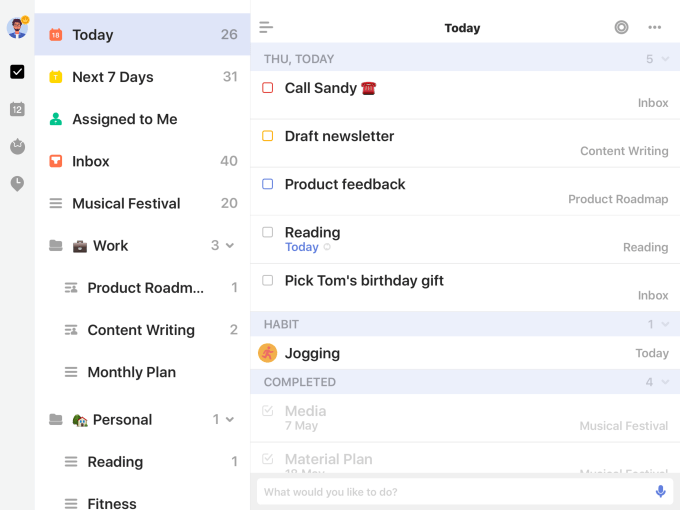
If you’re not a fan of your iPad’s built-in Reminders app, or you just want a more advanced to-do list and task management app, TickTick might be a good choice. You can use it for both professional and personal tasks.
The app lets you sync tasks across all of your devices and integrate your favorite calendar app. You can create checklists, set recurring tasks, upload attachments to tasks, share task lists to collaborate with others, and more.
If you want to develop a habit, such as meditating before bed, you can set your goals in the app and track your progress. And if you get an email but don’t have time to respond to it, you can turn it into a task to remind yourself not to forget to respond to it.
You can also add tags to your tasks to better manage them, and you can mark tasks based on their priority.
If you want to focus on a specific task, you can turn on the app’s “pomo timer,” which is based on the Pomodoro Technique that breaks work into focused intervals to maximize productivity.
TickTick is free to use, but if you want additional features like the ability to add up to five reminders to a task or more lists and tasks, then you’ll pay $3.99 per month or $35.99 per year.
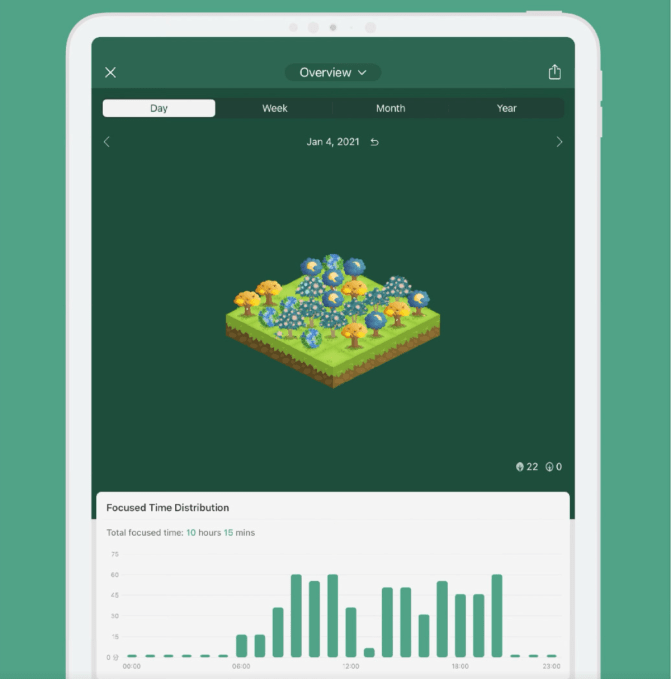
Forest is an interesting app that gamifies productivity while helping the environment. If you’re someone who struggles to stay on a task or are easily distracted, then this app might be good for you.
When you need to focus on something, you can open the app and plant a tree. Your tree will then grow as you focus on and finish your work. If you leave the app before the timer finishes, then your tree will wither and die.
You can set “Allow Lists” for different apps that you’re using to be productive, like an email app or Microsoft Word. The app also lets you track your productivity.
Over time, you create a digital forest that visualizes your productivity. If you’re competitive, you can share your forest with others to see how it compares to theirs. As you stay focused and grow virtual trees, you can earn coins that you can save to help plant actual trees around the world through tree-planting organization Trees for the Future.
Forest costs $3.99 to download, and you can buy in-app boosts to grow your forest and plant real trees faster.
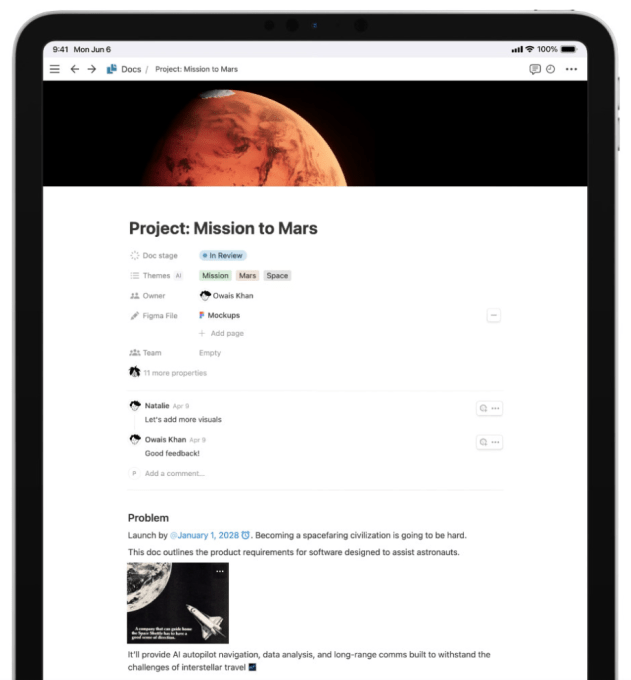
Notion is a great app for taking notes, managing tasks and workflows, organizing lists and habits, collaborating with others, and more. Instead of having to go to different apps to manage your calendar, tasks, and notes, you can get all of this done right within Notion.
You can integrate the different apps that you use, like Slack and Dropbox, in order to combine all of your workflows in one place. One of the great things about Notion is its flexibility and customization options. You can customize it to be what you need, whether it’s to organize your personal or work life, your schoolwork, or your passion projects.
If you’re not sure where to start, you can use templates to create things like a travel planner or a product roadmap. Notion also has an AI feature that helps you write and brainstorm ideas. Notion AI can help you get answers about your content and turn large amounts of data into digestible action items.
Notion offers a free plan for personal use. The company also offers an $8 per month Plus plan for small groups and a $15 per month Business plan for companies. You get 20 AI responses for free; after that you pay $10 per member per month.
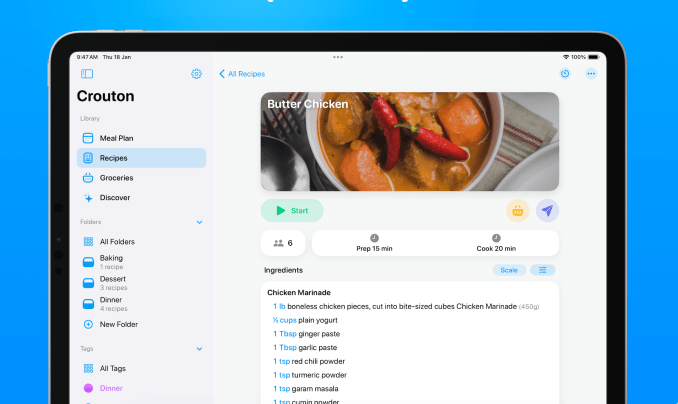
Sometimes planning what to eat can take up a lot of time, leaving less time for other tasks, so it can be nice to have an app to help with that. Crouton, meant to help make cooking and meal planning easier, is great for organizing recipes and planning grocery lists.
You can import recipes from websites or even scan them from a physical cookbook. So, instead of relying on bookmarked or physical recipes, you can store them together in one place.
You can plan out your meals for the week, and if you get stumped on what to make one day, the app can generate a meal plan for you. Once you have planned your meals for the week, you can create a grocery list that includes all of the ingredients you will need.
Crouton also features an in-app timer, so you don’t have to use a different app when you have time-specific steps of a recipe. Plus, you can share your recipes with others, whether to tell your family what’s for dinner or if you came across a recipe that you know your friend would love.
Crouton offers basic features for free, but if you want unlimited recipes and additional features, there’s a $14.99 yearly subscription.

Freedom is a great app for blocking distractions in order to focus on your work and be more productive. You can start a Freedom session to block distractions across all of your devices for a select amount of time.
You can choose which websites and apps you want to block during that time. So if you’re getting work done on your iPad, but then try to open TikTok on your phone, you won’t be able to and will instead see a green screen.
The app lets you start a session right away, schedule an upcoming one, or set a recurring one. If you know that you need to be free of distractions at a certain time every day, you can set up a Freedom session to start at that specific time each day.
If you’re someone who listens to specific sounds to help you focus, Freedom offers a variety that you can listen to. For example, you can listen to the sounds of a coffee shop in a city like New York or Berlin, the sounds of birds chirping, calming instrumentals, and more.
The app, which costs $3.99 per month, is pretty easy to use and includes a series of different articles that feature tips on how to boost productivity and better understand digital wellness.
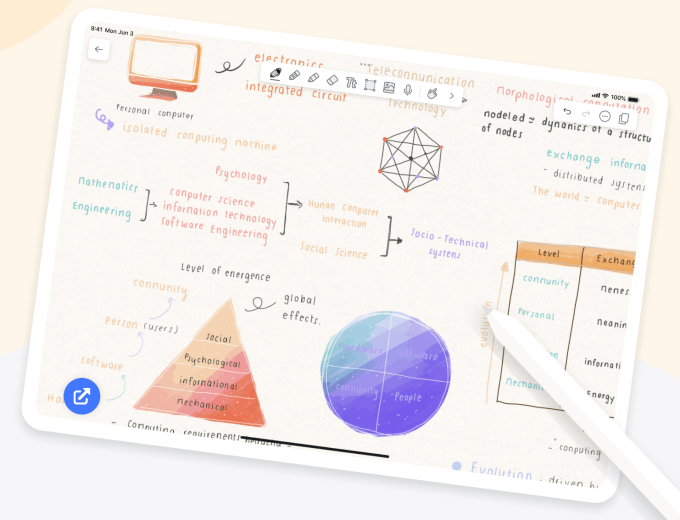
Notability is a great note-taking app that lets you jot down thoughts, import and annotate textbooks, record audio, and sketch out ideas. The app is useful for both students and professionals, or even hobbyists.
You can choose to take notes with an Apple Pencil, text, or audio. If you’re trying to find something specific, the app lets you search your notes, including handwritten ones and any documents you have uploaded.
Notability also features AI-generated note summaries and the ability to work on two different notes side by side. Plus, you can test your knowledge with personalized quizzes based on the content in your notes.
If you need a place to start, Notability includes a gallery of templates for things like planners, study notes, to-do lists, and more.
Notability is free but offers a $4.99 monthly subscription for access to additional features like math conversion, automatic audio transcription, unlimited notes, and more.
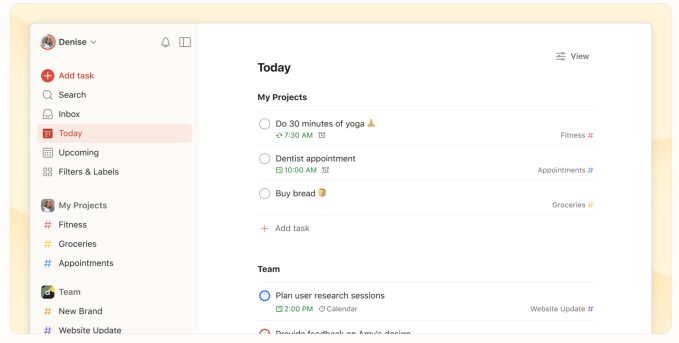
Todoist is a simple and straightforward app that lets you record and organize tasks using natural language. You can add tasks like, “Plan next week’s work every Friday afternoon” or “Do homework every Wednesday at 6 p.m.” to quickly organize and plan your life.
You can sort tasks into “Today,” “Upcoming,” or custom filters to allow you to focus on what currently matters, which means that you only see what’s relevant when you need it.
Todoist can be used for organizing a variety of tasks, whether they’re related to work, personal, education, or management goals and reminders. Plus, you can link Todoist with your calendar, voice assistant, and dozens of other tools such as Outlook, Gmail, and Slack.
In addition to the iPad, you can also access the service from your iPhone and Apple Watch, while also syncing across desktop and all other devices.
Todoist’s basic features are available for free. You can unlock additional features, such as an AI assistant and a calendar layout for $4 per month with Todoist’s “Pro” subscription plan.
Update: This story originally ran September 2024 and and is updated regularly with new information.
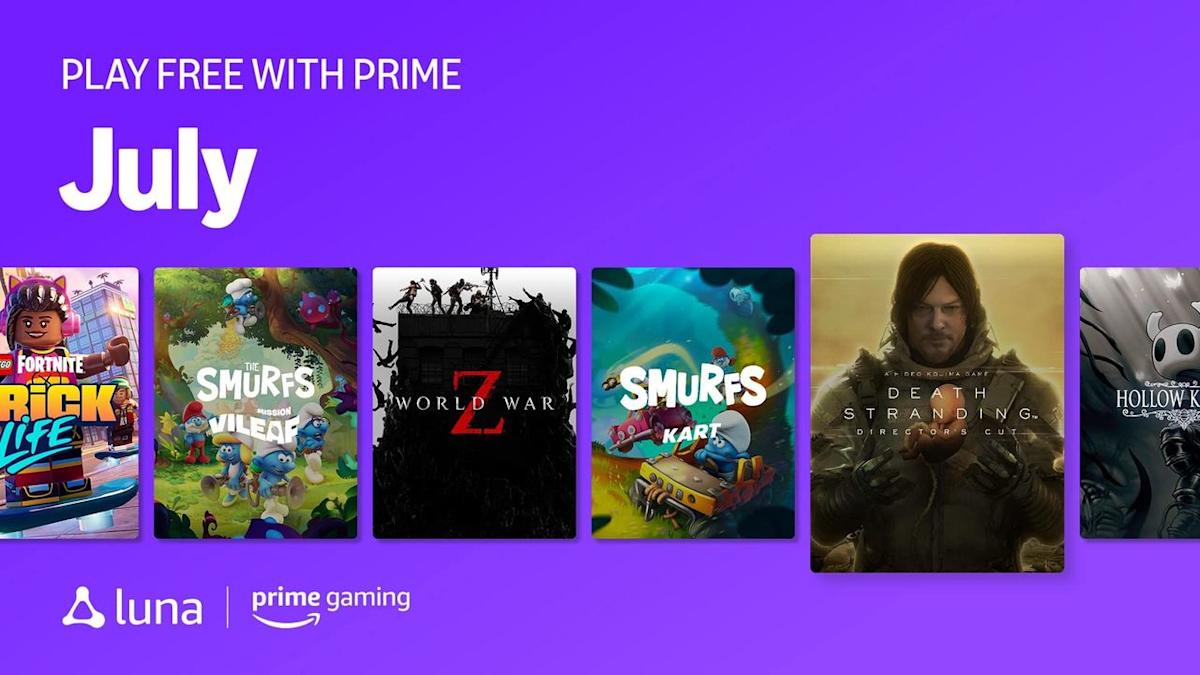
Amazon announced a fresh batch of games that it’s giving away for free or nearly free in July. The company’s cloud gaming platform, Amazon Luna, has a few notable standouts on its lineup of free titles this month for Prime members in regions where the service is available. However, you’ll want to play quick. Resident Evil 2 is available on Amazon Luna now through 11:59PM PT on July 12. Need for Speed Unbound is only free for July 5-6, while EA Sports FC 25 is getting two free weekends on July 19-20 and July 26-27. The director’s cut of Death Stranding and the excellent metroidvania Hollow Knight are also on the July roster for Luna, alongside mainstay titles such as Fortnite, Rainbow Six Siege and a few Fallout games.
Amazon also gives away game codes outside of Luna to Prime members each month. The big standout in the July batch is Venba, a lovely bite-sized game about cooking, family and the immigrant experience. Here’s the full rundown of free games available through Amazon this month:
Boxes: Lost Fragments (Epic Games Store)
Paquerette Down the Bunburrows (Epic Games Store)
ENDLESS Space 2 Definitive Edition (Amazon Games App)
Besiege: The Splintered Sea DLC (Amazon Games App)
I Love Finding Wild Friends Collector’s Edition (Legacy Games)
July is shaping up to be a busy month for gaming at Amazon, with the retailer’s kicking off in about a week. Amazon has already made a handful of available for free ahead of the big deals spree, and if it continues the trend from last year, expect to see a couple more freebies given out once Prime Day begins.

Using real-time DNA sequencing, scientists can now detect bacterial pathogens in corneal ulcers without the need for traditional corneal scraping. (Image credit: AdobeStock/Vitalii Vodolazskyi)
Researchers at Yale School of Medicine have identified in a new study a novel, noninvasive method for diagnosing bacterial corneal ulcers, a serious ophthalmologic condition that can lead to vision loss.1
Corneal ulcers, primarily caused by microbial keratitis, represent a global health challenge, contributing to up to 2 million cases of blindness annually. Current diagnostic methods rely on corneal scraping and culturing, which are invasive, time-consuming, and often yield false-negative results.1
“This work has the potential to redefine the diagnostic standard of care for corneal ulcers,” said Mathieu Bakhoum, MD, PhD, assistant professor of ophthalmology and visual science and senior author of the study. “Timely and targeted treatment prevents ulcer progression, reduces broad-spectrum antibiotic use, and diminishes the downstream need for surgical interventions.”
In a study published in Translational Vision Science and Technology, the Yale team used samples from 10 patients with bacterial corneal ulcers to compare traditional scrape-based culture diagnostics with nanopore-based DNA sequencing performed on tear samples using Oxford Nanopore Technologies’ portable MinION sequencer.1
“We were able to show that we can amplify the 16S rRNA bacterial gene directly from tears—bypassing both corneal scraping and nucleic-acid extraction—and obtain real-time, species-level identification using a handheld sequencer,” Backhoum said.
Researchers report the nanopore sequencing matched traditional cultures in all cases where the culture identified bacterial pathogens, and even detected bacteria in 2 cases where cultures were inconclusive. The Yale team said the sequencing of tears provided results in hours, compared with days for traditional culture-based methods.
Further research is needed to validate the technique across diverse pathogens and populations. Researchers said faster turnaround times in corneal ulcer diagnosis could reduce delays in treatment and result in better outcomes and less vision loss worldwide.
The research was supported by a grant from the Connecticut Lions Eye Research Foundation.
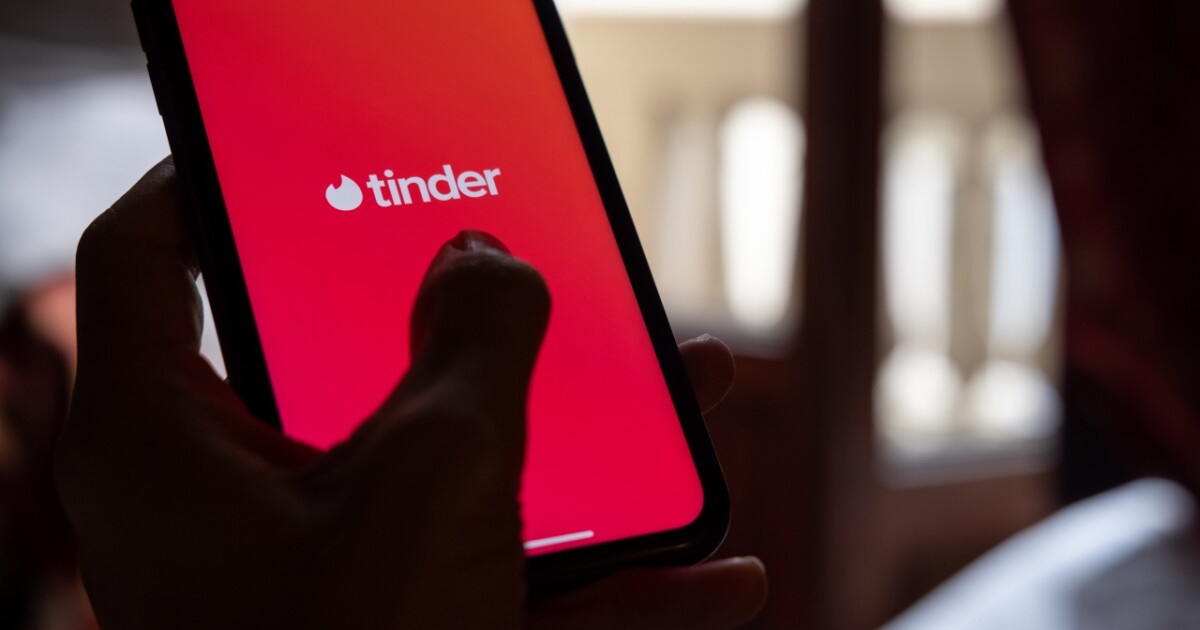
Dating app Tinder is testing new facial recognition technology aimed at reducing fraud and impersonation, as well as rebuilding trust with its users.
The feature, first reported by Axios, is called “Face Check,” and it is now mandatory for Tinder users in California. It prompts users to take a short video of themselves, which then creates a biometric face scan to verify the user’s identity, that they are a human and that the scan matches their profile photos.
According to Axios, the feature also checks to see if the user’s face matches other profiles. Once verified, users will get a special badge on their profile.
This verification process is part of Tinder’s efforts to ensure people on the platform are who they claim to be, potentially addressing concerns about catfishing and fake profiles.
The company has not yet announced when the feature might roll out to users in other states or countries.
This story was reported on-air by a journalist and has been converted to this platform with the assistance of AI. Our editorial team verifies all reporting on all platforms for fairness and accuracy.
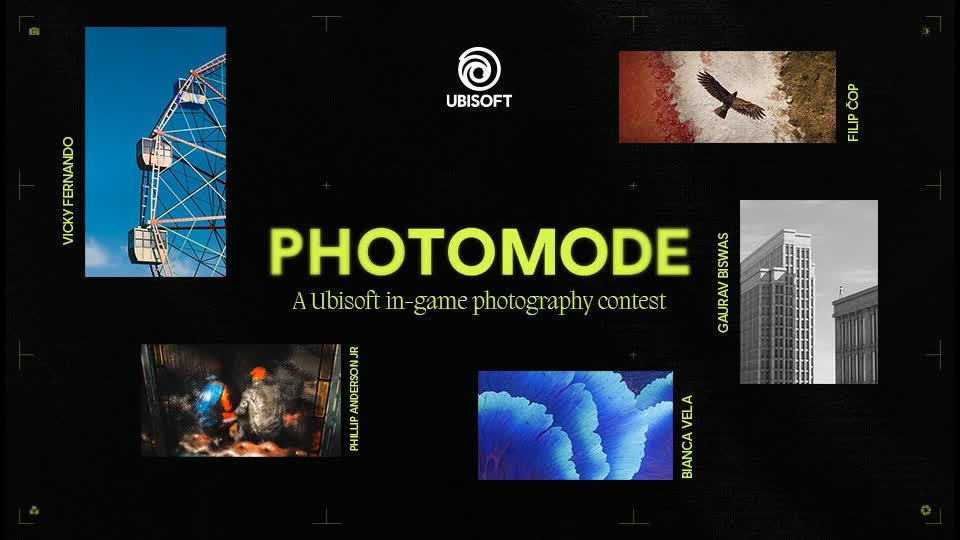
Video games are an art form, and Photomode lets you flex your own artistic muscles by capturing the beauty of Ubisoft’s worlds. Whether you’ve created the perfect shot of an assassination by Naoe or Yasuke in Assassin’s Creed Shadows, the expansive beauty of a galaxy in Star Wars Outlaws, or a wild trick on the slopes in Riders Republic, we invite you to submit your creations in Ubisoft’s third annual Photomode contest, running July 1-15.
To be eligible for consideration, all Photomode entries must be composed entirely in-game. That means no editing once you’ve taken the shot, but Ubisoft games offer ample composition options with in-game Photomode, including contrast, color, filters, unique angles, and many more. Additionally, all entries must be at least 1920×1080 pixels.
To enter, you can post up to four Photomode creations on Instagram or X (formerly Twitter), tagging @Ubisoft, and using the hashtag #UbisoftPhotomodeContest. This year’s jury panel consists of four experts within Ubisoft, including Jean Guesdon, Strategic Visualization Director at Ubisoft Montreal; Shauna Jones, Community Manager, Consumer Interaction / Virtual Photographer at Ubisoft Newcastle; Tom Isaksen, Character Director at Ubisoft Paris; and Pierre Espaignet, Lead Lighting Artist at Ubisoft Bordeaux.
Ten winners will be announced on August 1. The first-place winner will be invited to Ubisoft Montreal for a studio tour, while from the second to the tenth place winners will receive a one-year subscription to Ubisoft+ Premium. Additionally, some winners will have their work displayed at the Mutek Festival in Montreal from August 15-30.
Eligible games for the Photomode 2025 Contest are:
The Ubisoft Photomode Contest 2025 submission period opens on July 1 at 18:00 CEST and closes on July 15 at 21:00 CEST. For the full list of rules and eligibility requirements, visit the Ubisoft Photomode Contest website.